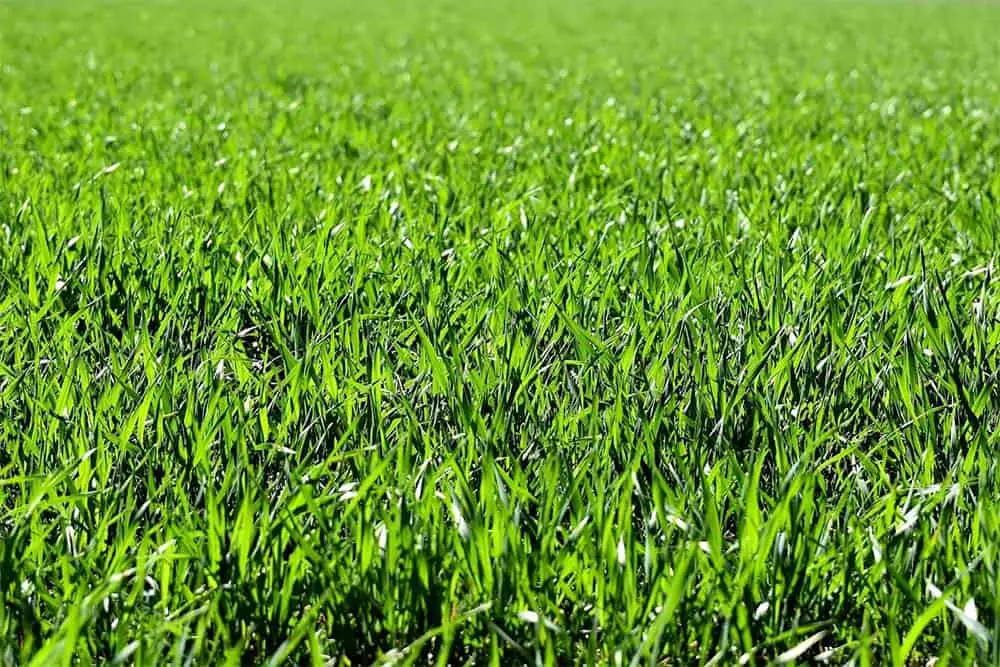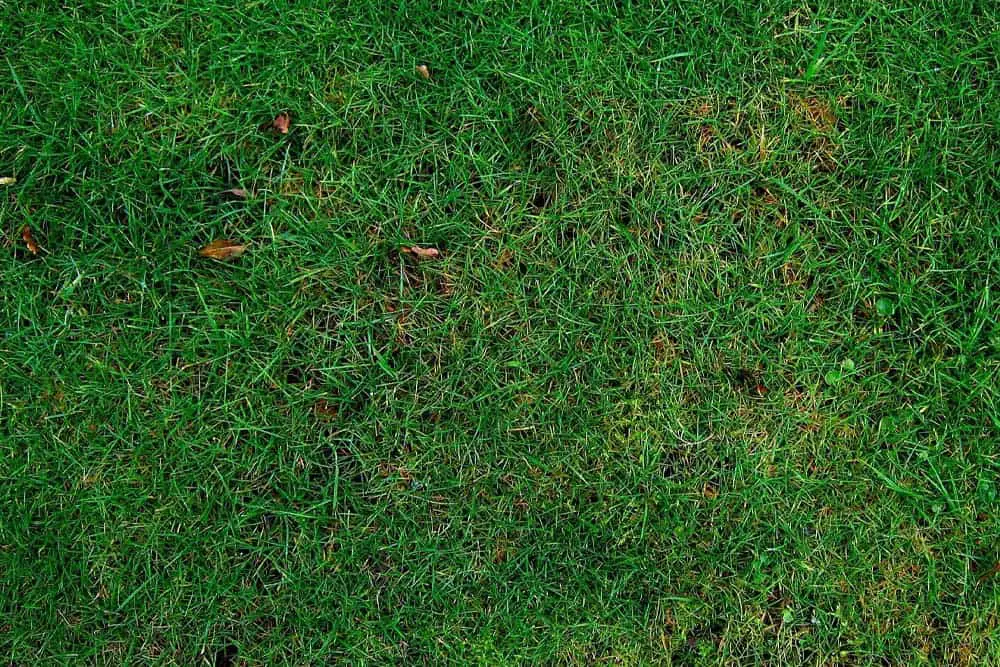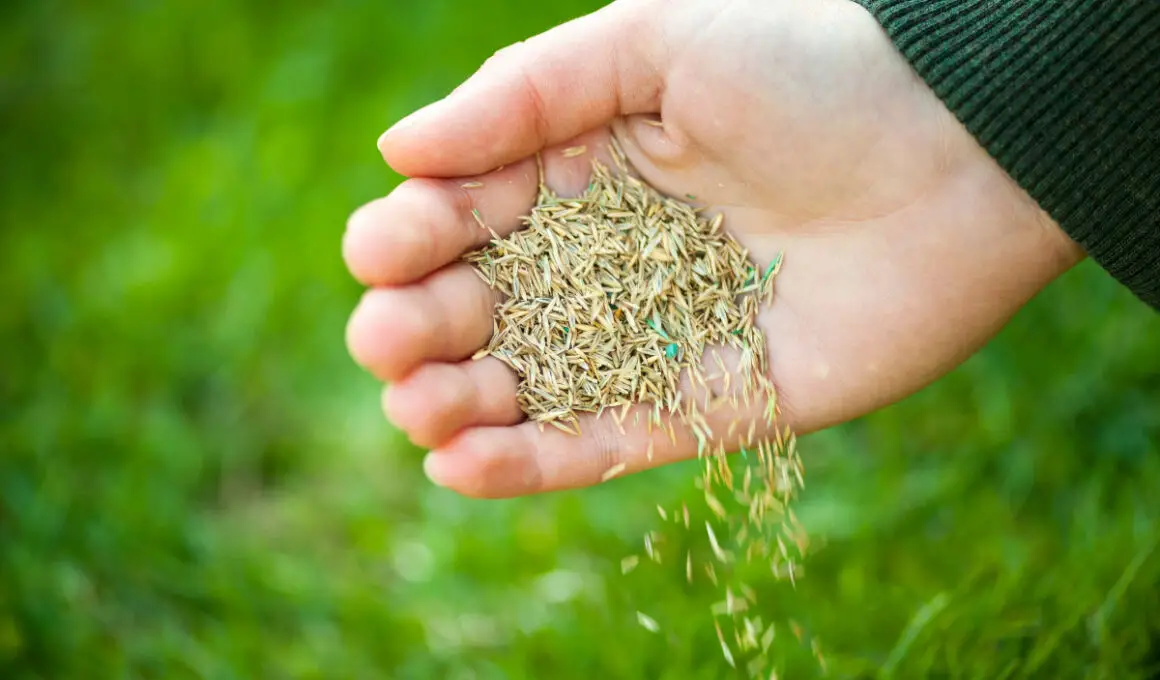In This Article Show
When it comes to creating a lush, green lawn, many landowners turn to grass seed as a way to achieve their desired look.
However, it’s essential to know that there can be such a thing as too much when it comes to grass seed. In this article, we’ll explore the history of lawn grass, the ideal amount and frequency of seed to use, and what to do if you’ve accidentally laid down too much seed.
NEW: Flames Coming Out Of Snow Blower Exhaust (What It Means)
A Brief History of Lawn Grass
There are more than 12,000 varieties of grass worldwide, each with unique characteristics and features (Forestell and Forestell). Grasses are among the most plentiful and widespread distributed plant families in every continent except Antarctica.
They are known for their long, narrow leaves and versatility in adapting to various environmental conditions. Grasses have been used for various purposes, including food for animals and humans, fuel, and ornamental landscaping.
They are also vital to many ecosystems, providing wildlife habitats and food and helping stabilize soil and prevent erosion.
Get Gardening For Beginners
Our new EBOOK shows newcomers and green thumbs alike a step by step guide to growing the garden of their dreams.
Lawn grass, or turf grass, has been cultivated for centuries. The lawn is considered an invention of Europe, where the climate originally supported close-cut grasslands. During the 16th and 17th centuries, wealthy individuals cultivated lawns as a status symbol.
These closely shorn grass lawns could only be maintained through human labor, and as a result, only the wealthiest could afford to maintain them, making them a symbol of their wealth and status. The trend of lawns as a status symbol continued in North America with the growth of suburbs and has now become a norm for many regions worldwide (“The History of Lawns”).

READ: High Lift Blades Vs. Mulching Blades: What You Should Know
How Much, How Often, and When to Put Grass Seed Down
When laying down grass seed, knowing how much to use and how often to do so is essential. A general rule of thumb is the following:
- Use 3-6 pounds of grass seed per 1000 square feet of the lawn when overseeding an existing healthy lawn.
- Use 6-8 pounds of grass per 1000 square feet of the lawn when overseeding an unhealthy lawn.
- Use 8-10 pounds per 1000 square feet of the lawn when overseeding a bare or new lawn.
However, it’s important to note that one grass seed can produce multiple blades of grass and that different varieties will grow in different sizes and shapes. Choose a grass that is native to or has been adapted to your region.
Read the grass packaging instructions to confirm the recommended seeding rate for that specific variety.
Regarding timing, there is flexibility regarding how often to lay down grass seed. Many landowners who desire a lawn can go decades without reseeding it, and it will persist. The lawn has not been reseeded for more than five years for my current house.
Get Gardening For Beginners
Our new EBOOK shows newcomers and green thumbs alike a step by step guide to growing the garden of their dreams.
However, to ensure that the lawn does not become thin and to maintain a thick look, seed once every 3-4 years. Seed your lawn in the fall, as this allows the grass seed to germinate and grow during the cooler months when the soil is still warm enough for growth.
It also reduces the need for manual watering.

Can Overseeding Be Bad for Your Lawn?
While it may seem counterintuitive, applying too much grass seed can actually be bad for your lawn. When you lay down too much seed, the grass may grow too thick, creating a dense mat that can suffocate itself and other plants.
This can lead to poor drainage, increased pests and diseases, and a lack of overall health for your lawn. Follow the general rule of thumb above or the seeding instructions of your purchased seeds.
How to Fix Once You’ve Laid Down Too Much Grass Seed
If you’ve accidentally laid down too much grass seed, don’t despair. There are a few things you can do to fix the problem. One option is to remove the excess seed by raking it up.
This will allow the existing grass to grow and thrive without being suffocated by the excess seed. Another option is thinning out the grass by mowing it more frequently.
This will help create a more open, airy lawn that can withstand the excess seed.
Final Thoughts
Grass seed is an effective way to maintain a lush, green lawn. However, it’s essential to use the right amount and to be mindful of the frequency of application.
If you’ve accidentally laid down too much seed, don’t worry – you can easily fix the problem and ensure that your lawn remains healthy for years to come!
References:
- Forestell, Tim, and Kevin Forestell. “Grass 101: The Earth’s Blanket.” DOZR, 8 June 2020, https://dozr.com/blog/grass/. Accessed 26 January 2023.
- “The History of Lawns.” Planet Natural, https://www.planetnatural.com/organic-lawn-care-101/history/. Accessed 26 January 2023.










